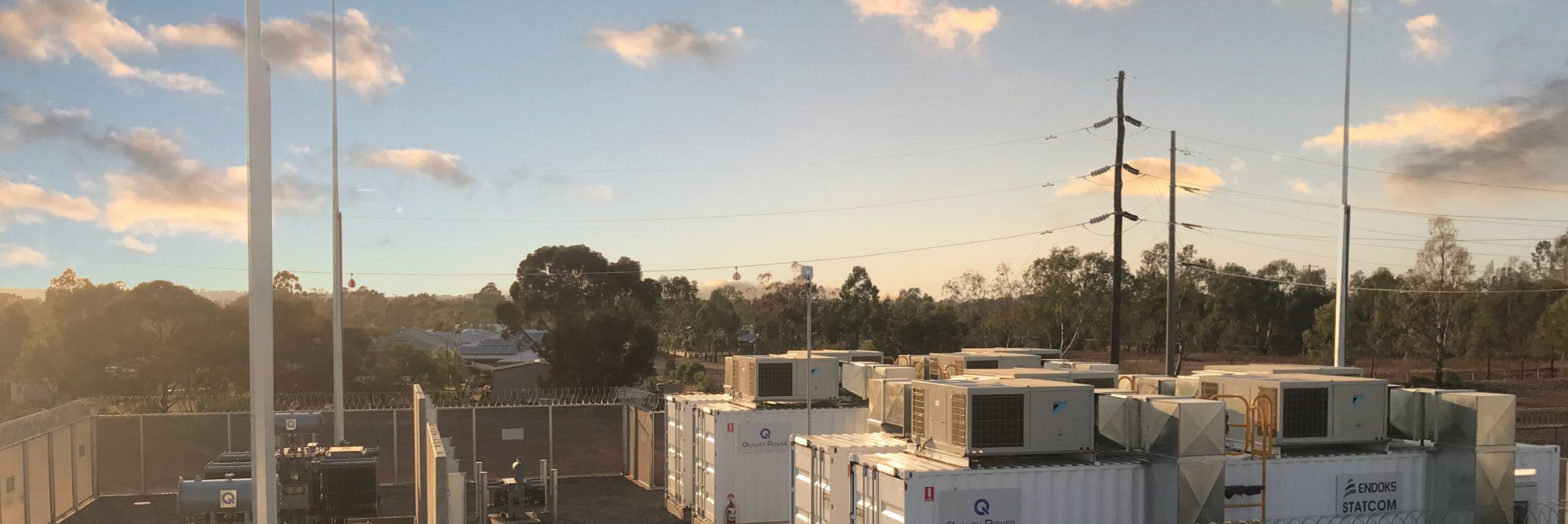A Static Synchronous Compensator (STATCOM) is a power electronics-based device utilized in electrical power systems to regulate voltage and reactive power. Unlike traditional capacitor banks or inductors, STATCOMs offer dynamic and precise control over reactive power compensation, making them invaluable for maintaining grid stability and power quality. By continuously adjusting the output voltage of its inverter, a STATCOM can inject or absorb reactive power into the grid as needed, effectively controlling voltage levels and mitigating voltage fluctuations caused by changes in load or generation. This real-time capability enables STATCOMs to respond rapidly to disturbances, ensuring grid stability even under challenging operating conditions such as faults or sudden load changes.

STATCOM
One of the key advantages of STATCOMs is their ability to provide reactive power support independently of the magnitude and frequency of the grid voltage. This flexibility allows STATCOMs to operate seamlessly across a wide range of grid conditions, making them well-suited for modern power systems characterized by increasing renewable energy integration and fluctuating loads. Additionally, STATCOMs can offer advanced features such as harmonic mitigation and voltage flicker reduction, further improving power quality for sensitive loads. With their proven effectiveness in enhancing grid stability, managing power flow, and supporting renewable energy integration, STATCOMs have become essential components of modern power transmission and distribution networks, contributing to the reliable and efficient operation of electrical systems worldwide.

How STATCOM Works:
A STATCOM regulates voltage at its terminal by controlling the amount of reactive power injected into or absorbed from the power system. When the network voltage is low, the STATCOM generates reactive power (STATCOM capacitive). When the voltage is high, it absorbs reactive power (STATCOM inductive). This dynamic response is achieved through a Voltage Source Converter (VSC) that converts AC power to DC and vice versa. The VSC uses Insulated Gate Bipolar Transistors (IGBTs) or similar devices to switch high-frequency electrical impulses that simulate a sine wave.
Components of STATCOM:
- Voltage Source Converter (VSC): Converts DC voltage into a three-phase AC output and vice versa.
- DC Energy Storage: Often a capacitor or sometimes a battery that helps maintain the DC voltage at the VSC.
- Reactor: Connects the STATCOM to the grid and helps in interfacing with the AC system.
- Control System: The brain of the STATCOM, it dictates how much reactive power needs to be injected or absorbed based on real-time grid conditions.
Key Advantages:
- Voltage Control: Improves voltage stability under dynamic conditions, preventing voltage collapse and enhancing the quality of electricity delivered.
- Reactive Power Support: Provides near-instantaneous reactive power support, helping to maintain desired voltage levels across the grid.
- System Stability: Enhances the stability of power systems by supporting during transient and dynamic disturbances.
- Power Quality: Reduces power quality issues such as flicker and harmonics, improving reliability for sensitive industrial processes.
- Energy Efficiency: Increases the capacity and efficiency of existing power systems, delaying or avoiding costly infrastructure upgrades.
Applications of STATCOM:
- Renewable Energy Systems: Helps integrate solar and wind installations, managing the variability and intermittency of power generation.
- Utility Grids: Stabilizes voltage during rapid load changes, such as those caused by large industrial facilities or sudden changes in power demand.
- Industrial Plants: Improves power quality in facilities with heavy machinery that can cause significant voltage fluctuations.
- Transportation: Used in electric railway networks to stabilize voltages affected by the dynamic power demands of trains.
Features of STATCOM
- Voltage Source Converter (VSC) Based Shunt Compensation System
- Capability to Provide Both Inductive and Capacitive Reactive Power
- Flicker Mitigation
- Power Factor Correction
- Voltage Regulation
- Flicker Compensation
- Voltage Ride Through Support
- Load Balancing
STATCOM (Static Synchronous Compensator) VS SVC (Static Var Compensator)
| Feature | STATCOM | SVC |
| Technology | Based on Voltage Source Converter (VSC) | Based on thyristors (typically in the form of TCR – Thyristor Controlled Reactor and TSC – Thyristor Switched Capacitor) |
| Reactive Power | Can provide both leading and lagging reactive power continuously without changing components | Provides reactive power by switching components to either absorb or generate reactive power |
| Response Time | Very fast (typically in microseconds) | Slower than STATCOM (milliseconds) |
| Voltage Control | More effective at lower voltage levels due to its ability to maintain output at reduced AC voltages | Less effective at low voltage levels as its capability depends on the system voltage |
| Efficiency | Higher efficiency due to use of VSC technology | Generally, less efficient compared to STATCOM |
| Harmonic Generation | Lower harmonics due to the use of modern semiconductor devices | Can produce more harmonics because of the switching of the thyristors |
| Physical Size | Typically, more compact and less dependent on physical size for performance | Often larger and bulkier due to the need for reactors and capacitors |
| Cost | Generally, more expensive due to advanced technology | Typically, less expensive due to more established technology |
| Installation and Maintenance | Less maintenance required due to fewer mechanical parts | Requires regular maintenance and monitoring due to mechanical switching elements |
| Flexibility and Scalability | Highly scalable and flexible in configuration | Less flexible in terms of scalability and customization |
Both STATCOM and SVC have their own advantages and are chosen based on specific application requirements, including the existing infrastructure, cost considerations, and desired performance characteristics.


